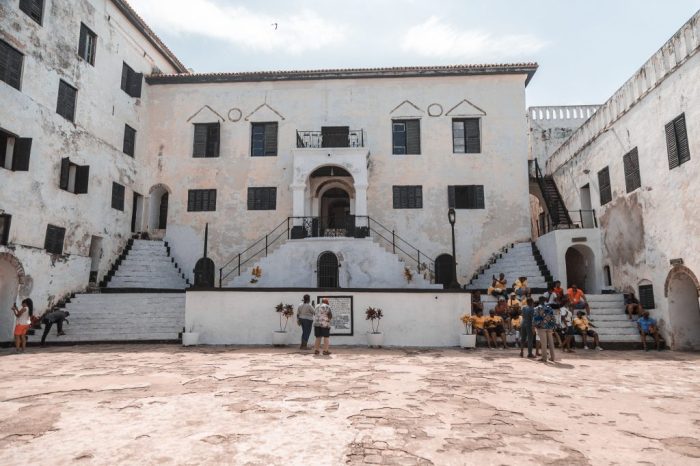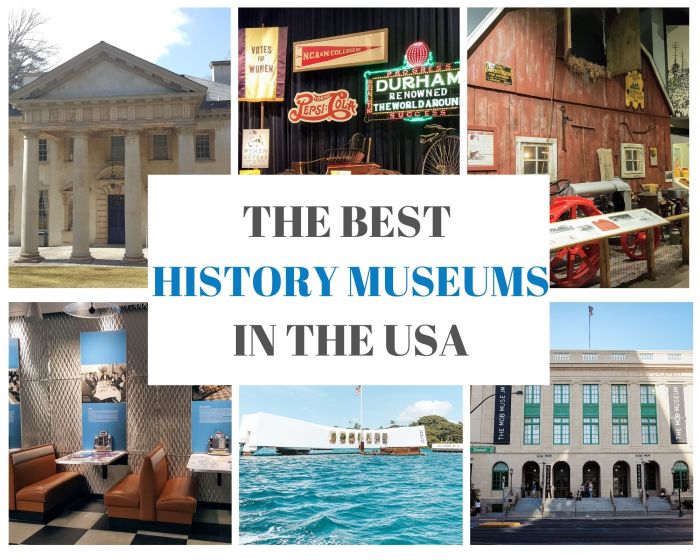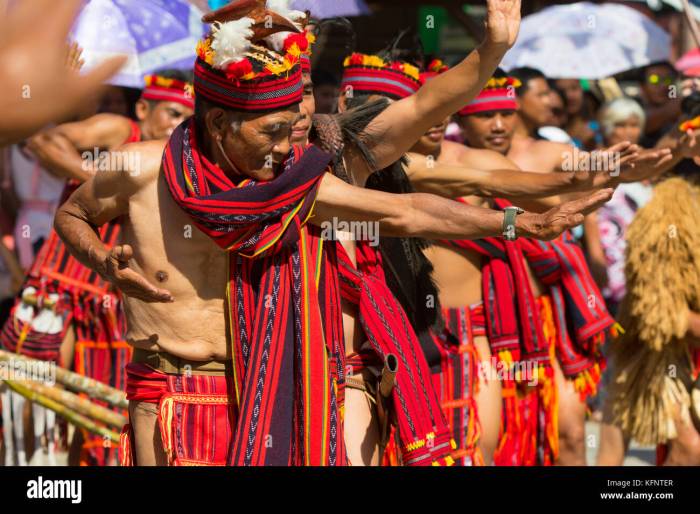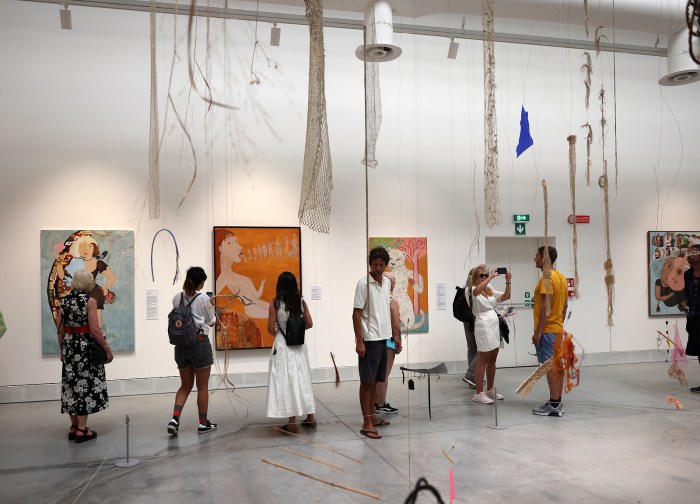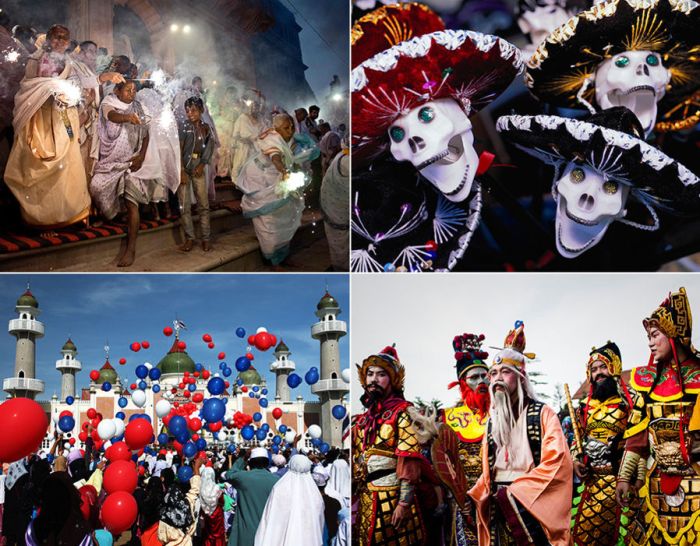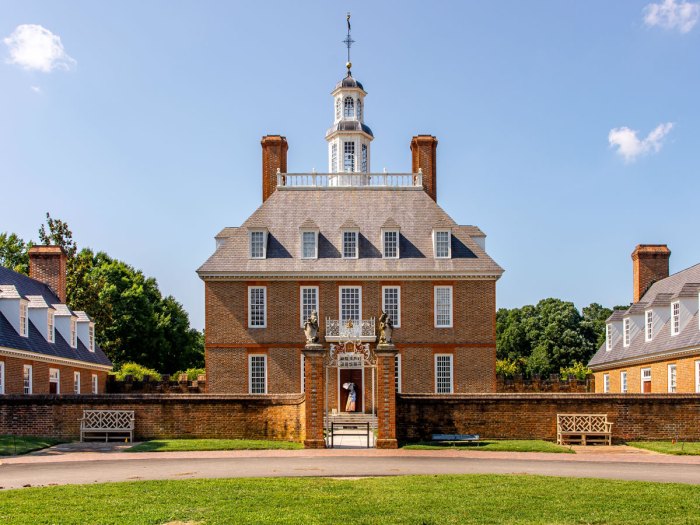
Colonial History Tours in the Americas unveil a captivating journey through time, exploring the diverse legacies and complexities of European colonization across the Americas. From the cobblestone streets of colonial cities to the remnants of plantations and indigenous settlements, these tours offer a multifaceted perspective on a pivotal period in history. They delve into the economic, social, and cultural impacts of colonization, while acknowledging the varied experiences of diverse populations, both indigenous and immigrant.
This exploration encompasses a wide range of tour types, from guided walking tours highlighting architectural marvels and historical sites to immersive experiences that recreate the atmosphere of colonial life. We will examine the economic benefits and potential drawbacks of this form of tourism, including its role in shaping public understanding and the ethical considerations involved in presenting this often-controversial history responsibly and respectfully.
Geographic Variations in Colonial History Tours
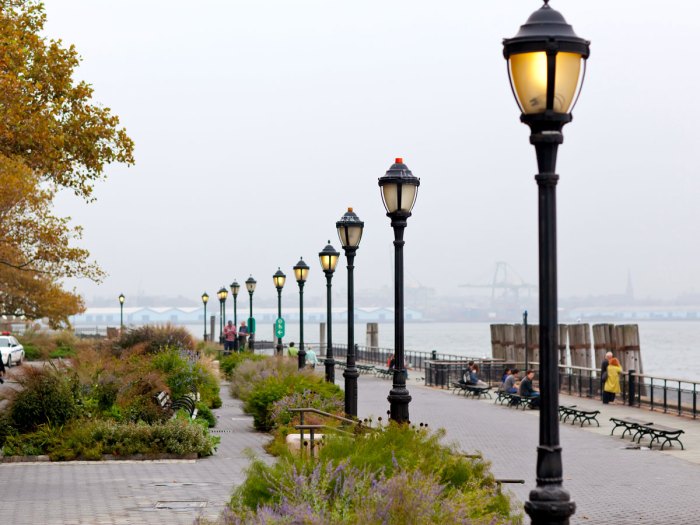
Colonial history tours across the Americas offer vastly different experiences depending on the region visited. The historical narratives, cultural sensitivities, and even the style of the tours themselves vary significantly, reflecting the unique colonial legacies of each nation. Understanding these variations is crucial for both tour operators and participants to ensure respectful and informative experiences.
Regional Comparisons of Colonial History Tours
The following table compares colonial history tours across different regions of the Americas, highlighting key differences in location, historical focus, tour style, and price range. These are broad generalizations, and specific tour offerings will vary greatly depending on the operator and itinerary.
| Location | Historical Focus | Tour Style | Price Range (USD per person) |
|---|---|---|---|
| North America (e.g., Boston, Williamsburg, Quebec City) | American Revolution, early settlement, interactions with Indigenous populations, development of distinct national identities. | Walking tours, bus tours, living history museums, reenactments. Often focuses on specific historical sites and events. | $50 – $500+ (depending on duration and inclusions) |
| South America (e.g., Lima, Cartagena, Buenos Aires) | Spanish colonization, independence movements, indigenous resistance, the impact of slavery, and the development of unique cultural identities within a Spanish colonial framework. | Walking tours, visits to colonial architecture and historical sites, museum tours. Often incorporates cultural experiences such as food and music. | $75 – $600+ (depending on duration and inclusions) |
| Caribbean (e.g., Havana, San Juan, Port Royal) | Sugar plantations, the transatlantic slave trade, pirate history, colonial administration, and the diverse cultural heritage resulting from multiple colonial powers. | Walking tours, boat tours, visits to forts and plantations, often incorporating discussions about the legacy of slavery and its ongoing impact. | $60 – $400+ (depending on duration and inclusions) |
Unique Historical Narratives in Colonial History Tours, Colonial History Tours in the Americas
Each nation in the Americas possesses a unique colonial history, shaping the narratives presented in its tours. For example, tours in North America might focus on the struggle for independence from Britain, while tours in South America might highlight the resistance to Spanish rule and the complexities of post-colonial nation-building. Caribbean tours often address the brutal realities of the transatlantic slave trade and its lasting impact on the region’s culture and society.
These diverse narratives reflect the multifaceted nature of colonial experiences across the Americas.
Cultural Sensitivities and Tour Operator Responses
Colonial history tours inevitably touch upon sensitive topics, including indigenous dispossession, slavery, and violence. Responsible tour operators acknowledge these sensitivities and strive to present a balanced and nuanced perspective. This might involve partnering with local communities, including Indigenous voices and perspectives in tour narratives, and avoiding language that glorifies colonial oppression. Many operators actively work to promote reconciliation and understanding, aiming to create educational and respectful experiences that engage with the complexities of the past without minimizing suffering or promoting harmful stereotypes.
For instance, some tours in the Caribbean now actively involve descendants of enslaved people in their presentations, offering firsthand accounts and insights.
Types of Colonial History Tours
Exploring the rich tapestry of colonial history in the Americas offers a diverse range of experiences. The type of tour you choose significantly impacts your overall understanding and enjoyment of the period. From intimate walking tours to expansive bus journeys, the options cater to various learning styles and preferences. Consider your interests and desired level of engagement when selecting a tour.
Different types of colonial history tours cater to varied interests and learning styles. These tours offer unique perspectives and levels of immersion, allowing visitors to connect with the past in meaningful ways. The choice of tour depends largely on personal preference, time constraints, and the specific historical aspects one wishes to explore.
Categorization of Colonial History Tours
Colonial history tours can be categorized in several ways, offering a spectrum of experiences for the interested traveler. Each type provides a unique approach to understanding this significant period in American history.
- Walking Tours: These intimate tours typically focus on a specific neighborhood, city, or historical site, allowing for a detailed exploration of buildings, landmarks, and the surrounding environment. They often involve smaller groups, facilitating interaction with the guide and fellow participants.
- Bus Tours: Covering larger geographical areas, bus tours offer a broader overview of colonial history. They are ideal for seeing multiple sites and gaining a comprehensive understanding of the region’s historical development. Bus tours often incorporate stops at significant locations for more in-depth exploration.
- Themed Tours: Focusing on specific aspects of colonial history, themed tours delve into particular topics such as the lives of enslaved people, the development of specific industries, or the impact of particular historical events. These tours offer a specialized perspective on the colonial era.
- Interactive Experiences: These tours incorporate hands-on activities, role-playing, or reenactments to enhance engagement and understanding. They often involve participation in historical demonstrations or simulations, making the learning process more dynamic and memorable. Examples might include living history museums or guided tours that include historical reenactments.
Brochure Design: Diverse Colonial History Tour Options
A brochure showcasing diverse colonial history tour options would benefit from a visually appealing design. High-quality images, clear descriptions, and concise information are crucial for attracting potential tourists. The brochure should highlight the unique selling points of each tour type, emphasizing the benefits and experiences offered.
Imagine a tri-fold brochure. The front would feature a captivating image – perhaps a restored colonial building against a backdrop of lush greenery. The inside left panel would showcase walking tours, with images of cobblestone streets and charming colonial architecture, emphasizing intimate exploration and detailed insights. The center panel would highlight bus tours, showing panoramic views of colonial cities and landscapes, emphasizing broad coverage and efficient sightseeing.
The right panel would feature themed tours and interactive experiences. An image depicting a historical reenactment would complement the description of interactive experiences. Each tour would include a concise description, price, duration, and contact information. The back panel would feature testimonials from past participants and contact information for bookings.
Comparative Analysis of Educational Value and Immersive Qualities
The educational value and immersive qualities of different colonial history tour types vary considerably. A comparative analysis reveals the strengths and weaknesses of each approach, guiding potential tourists toward the most suitable option based on their learning preferences.
| Tour Type | Educational Value | Immersive Qualities |
|---|---|---|
| Walking Tours | High detail, focused exploration, intimate interaction with the environment | High; allows for sensory engagement with the historical context. |
| Bus Tours | Broad overview, efficient coverage of multiple sites | Moderate; provides visual context but may lack the depth of interaction found in walking tours. |
| Themed Tours | Specialized knowledge, in-depth understanding of a specific topic | Varies; can be highly immersive depending on the theme and activities involved. |
| Interactive Experiences | Hands-on learning, active participation, enhanced memory retention | High; allows for direct engagement with the historical narrative through participation. |
The Impact of Colonial History Tours on Tourism

Colonial history tours significantly impact the tourism sector in the Americas, generating economic benefits while simultaneously shaping public perception of a complex and often controversial past. Their success, however, is highly dependent on factors ranging from the quality of presentation to the sensitivity with which historical narratives are handled.The economic impact of these tours is multifaceted. Direct revenue streams include ticket sales, guide fees, and merchandise purchases.
Indirect benefits extend to related industries like hospitality (hotels, restaurants), transportation, and local craftspeople who often supply souvenirs or related services. Furthermore, the influx of tourists can stimulate investment in infrastructure improvements and the preservation of historical sites, creating long-term economic growth in affected communities.
Economic Impacts of Colonial History Tours
Successful colonial history tourism initiatives often involve strong partnerships between local communities, government agencies, and private tour operators. For instance, the well-managed historical sites in Williamsburg, Virginia, generate significant revenue, supporting local businesses and contributing to the overall economic vitality of the region. The meticulous reconstruction of historical buildings, coupled with engaging and informative tours, attracts a large number of visitors each year, fostering a thriving tourism industry.
Conversely, poorly planned or insensitive tours can damage a community’s reputation and deter visitors. Examples of unsuccessful initiatives include those that fail to address the complexities of colonial history, potentially trivializing or glorifying oppressive aspects of the past. This can lead to negative press and boycotts, ultimately harming the local economy. A lack of investment in infrastructure or inadequate training for tour guides can also negatively impact visitor experience and economic returns.
Successful and Unsuccessful Colonial History Tourism Initiatives
Successful initiatives prioritize accurate and nuanced historical interpretations, engaging storytelling techniques, and a respectful approach to the legacies of colonialism. They often incorporate diverse perspectives and acknowledge the suffering caused by colonial practices. For example, tours that focus on the experiences of enslaved people or indigenous populations alongside the stories of colonial settlers provide a more complete and balanced understanding of the past.
Conversely, unsuccessful initiatives frequently present a sanitized or romanticized version of colonial history, ignoring or minimizing the negative impacts of colonization on marginalized communities. This can lead to public backlash and accusations of historical revisionism. A lack of community involvement in the planning and execution of tours can also lead to resentment and ultimately hinder the success of the initiative.
Shaping Public Perception Through Colonial History Tours
Colonial history tours play a significant role in shaping public perception and understanding of the colonial past. Well-crafted tours can foster empathy, critical thinking, and a more nuanced appreciation for the complexities of history. By presenting diverse perspectives and acknowledging the negative consequences of colonialism, these tours can challenge traditional narratives and promote a more inclusive understanding of the past.
However, poorly executed tours can perpetuate harmful stereotypes, reinforce biased interpretations, and hinder genuine reconciliation efforts. The presentation of historical information should be carefully considered to avoid perpetuating harmful myths or minimizing the suffering of those who were oppressed during the colonial era. The potential for misrepresentation and the importance of responsible historical interpretation are key factors to consider.
Ethical Considerations in Colonial History Tours
Presenting colonial history requires careful consideration of ethical implications. The narratives we construct and the way we present them significantly impact how visitors understand this complex and often painful period. Failing to acknowledge the diverse perspectives and experiences of all involved, particularly marginalized groups, risks perpetuating harmful stereotypes and minimizing the suffering inflicted during colonial rule.The potential for misrepresentation is substantial.
Colonial history is often presented through a Eurocentric lens, focusing on the achievements of European colonizers while overlooking or downplaying the perspectives and experiences of Indigenous peoples and enslaved individuals. This biased approach can reinforce existing power imbalances and contribute to a distorted understanding of the past. Furthermore, the use of insensitive language, imagery, or reenactments can cause significant offense and retraumatize descendants of those affected by colonization.
Representation of Marginalized Groups
Accurate and respectful representation of marginalized groups is paramount. Tours should move beyond simply mentioning the existence of these groups and actively incorporate their stories, perspectives, and experiences into the narrative. This requires thorough research and consultation with relevant communities, ensuring that their voices are not only heard but also central to the storytelling. For instance, a tour discussing the transatlantic slave trade should include accounts from enslaved people, highlighting their resilience, resistance, and cultural contributions, rather than solely focusing on the economic aspects from the perspective of European traders.
This could involve incorporating excerpts from slave narratives, showcasing artwork created by enslaved people, or featuring the stories of individuals who fought for abolition.
Creating Engaging and Respectful Tours
Developing engaging and respectful tours involves a multi-faceted approach. Firstly, it requires a commitment to inclusivity. The tour design should deliberately challenge dominant narratives and incorporate diverse perspectives. Secondly, using empathetic and sensitive language is crucial. Avoid language that glorifies colonization or minimizes its impact.
Thirdly, interactive elements, such as discussions and opportunities for reflection, can encourage critical engagement with the material. For example, a tour could incorporate a guided discussion on the lasting impacts of colonialism on modern society or a moment of silence to reflect on the suffering experienced by those affected by colonial rule. Finally, actively seeking feedback from diverse audiences helps to ensure that the tour remains sensitive and relevant.
Code of Ethics for Colonial History Tours
A code of ethics for colonial history tours should prioritize responsible tourism practices. This includes:
- Accurate and balanced historical representation: Presenting a nuanced and comprehensive account of colonial history, acknowledging both the positive and negative aspects, and giving voice to marginalized groups.
- Respectful language and imagery: Avoiding language that glorifies colonization or minimizes its impact, and using appropriate and sensitive imagery.
- Community engagement and consultation: Working closely with Indigenous communities and descendant communities to ensure that their perspectives are accurately represented and their concerns are addressed.
- Educational focus: Prioritizing education and promoting critical thinking about the complexities of colonial history.
- Transparency and accountability: Being transparent about the sources used and the perspectives presented, and being accountable for any inaccuracies or misrepresentations.
- Sustainable tourism practices: Minimizing the environmental impact of the tour and supporting local communities.
“Responsible tourism is not just about minimizing harm; it’s about actively contributing to positive change.”
Luxury Travel Experiences Related to Colonial History: Colonial History Tours In The Americas
The burgeoning interest in historical exploration is increasingly intersecting with the demand for high-end travel experiences. Luxury colonial history tours offer a unique blend of educational immersion and opulent comfort, catering to discerning travelers seeking enriching and unforgettable journeys. This fusion creates a lucrative niche within the travel market, attracting individuals with a passion for history and a penchant for refined luxury.
A Luxury Colonial History Tour Package
This meticulously crafted itinerary combines the intellectual stimulation of exploring colonial history with the unparalleled indulgence of luxury travel. The package focuses on a specific region rich in colonial heritage, such as the Caribbean or Southeast Asia, allowing for a deeper, more immersive experience.
| Tour Element | Description |
|---|---|
| Colonial History Tour | Expert-led guided tours of significant historical sites, including private access to museums and archives. Lectures by renowned historians and personalized itineraries tailored to individual interests. Accommodation in luxurious boutique hotels or restored colonial mansions. |
| Private Island Vacation | Exclusive access to a private island resort, offering unparalleled seclusion and personalized service. Activities include private beach access, snorkeling, diving, and gourmet dining experiences. |
| High-End Travel Accessories | Provision of bespoke luggage, high-quality travel apparel, and luxury accessories, curated to enhance the overall travel experience. |
| Exclusive Travel Experiences | Access to private events, such as exclusive dinners with local dignitaries or private performances of traditional music and dance. Opportunities for interaction with local artisans and community members. |
| Premium Travel Guides | Personalized travel guides with detailed itineraries, historical insights, and recommendations for bespoke dining and shopping experiences. |
| Luxury Train Journey | Travel between destinations aboard a luxurious train, complete with private cabins, gourmet dining, and scenic views. This element adds an element of old-world glamour and comfort. |
Potential Market for Luxury Colonial History Tours and Growth Factors
The market for luxury colonial history tours is steadily expanding, driven by several key factors. Firstly, the growing affluence of high-net-worth individuals fuels demand for unique and exclusive travel experiences. Secondly, a renewed interest in history and heritage tourism creates a strong foundation for this niche market. Thirdly, the increasing accessibility of luxury travel options, including private jets and bespoke travel services, makes such experiences more attainable.
The rise of experiential travel, prioritizing unique and immersive experiences over simple sightseeing, further contributes to this growth. For example, the success of high-end cruises that incorporate historical themes demonstrates the market’s receptiveness to this type of luxury offering.
Luxury Amenities and Services Enhancing High-End Colonial History Tours
Several amenities and services can significantly enhance the luxury experience of a colonial history tour. These include private chauffeured transportation, personalized butler service, access to exclusive events and private collections, curated dining experiences featuring locally sourced ingredients and traditional recipes, spa treatments incorporating local ingredients, and bespoke shopping experiences featuring handcrafted local goods. Imagine, for instance, a private cocktail reception hosted by a renowned historian within a beautifully restored colonial building, followed by a gourmet dinner featuring locally-sourced ingredients paired with award-winning wines.
The inclusion of a personal concierge dedicated to fulfilling each guest’s specific needs and preferences would further elevate the level of personalization and service.
Visual Representation of Colonial History Tours
Effective visual representation is crucial for engaging visitors on colonial history tours. Images and other visual aids can dramatically enhance understanding and emotional connection to the past, transforming a historical narrative into a tangible and memorable experience. They serve not only to illustrate key sites and artifacts but also to evoke the atmosphere and significance of the colonial period.Visual representations should strive for accuracy and authenticity while also considering the ethical implications of portraying potentially sensitive historical events.
Carefully curated visuals can help foster a more nuanced and critical understanding of the colonial past.
Images Showcasing Different Aspects of Colonial History Tours
The power of imagery lies in its ability to transport visitors to another time. Consider these examples:A photograph of the meticulously preserved architecture of a colonial-era plantation in Charleston, South Carolina, showcasing its grand façade, manicured gardens, and looming live oaks draped in Spanish moss. The image would evoke the opulence and grandeur of the plantation system, while also subtly hinting at the harsh realities of slavery that existed within its walls.
The decaying paint on the window frames and the slight lean of the columns could add to the visual storytelling, suggesting the passage of time and the enduring impact of history.An image focusing on a specific artifact, such as a hand-stitched sampler from a colonial-era home in Williamsburg, Virginia, detailed with vibrant threads depicting flora and fauna. The close-up shot could highlight the intricate stitches and the faded colors, underscoring the craftsmanship and the passage of time.
The accompanying description could detail the sampler’s significance as a testament to the skills and creativity of colonial women, possibly linking it to a specific individual or family.A photograph of a historical reenactment, depicting a colonial-era militia drill in Boston, Massachusetts, with actors in period costume meticulously demonstrating the use of muskets and cannons. The image could capture the energy and precision of the drill, portraying the military aspects of colonial life.
The slightly blurred motion of the actors and the smoke from the muskets could create a sense of dynamism and immediacy.
A Visual Guide: Colonial History of the Caribbean
A visual guide for the colonial history of the Caribbean could begin with a map illustrating the various European powers’ colonial holdings (Spain, France, Britain, Netherlands). This would immediately establish the geographical context and the complexities of overlapping colonial influences.Subsequent images could depict:A sugar plantation in Barbados, showing the vast fields, the processing mill, and (sensitively and ethically represented) elements relating to the enslaved population’s living conditions.
This image would illustrate the economic foundation of Caribbean colonialism and its brutal reliance on enslaved labor.A vibrant image of a colonial-era port city, like Port-au-Prince, Haiti, showing the bustling activity of trade and the diverse architectural styles reflecting the influences of various colonial powers. This would showcase the cultural exchange and the cosmopolitan nature of colonial port cities, albeit with an understanding of the power imbalances that shaped these interactions.A portrait of a prominent figure from the Caribbean’s colonial past, such as Toussaint Louverture, accompanied by a brief description of their role in the struggle for independence.
This would provide a human face to the history and highlight the resistance to colonial rule.Finally, an image of a modern-day celebration of Caribbean culture, highlighting the enduring legacy of the colonial past in the region’s traditions and identities. This would show the complex and multifaceted relationship between the colonial past and the present-day Caribbean. The images would be accompanied by concise captions and descriptions, offering historical context and promoting critical reflection.
Ultimately, Colonial History Tours in the Americas provide a unique opportunity to engage with a complex and often challenging past. By exploring the diverse narratives and perspectives associated with this period, we can foster a more nuanced and informed understanding of the present. Responsible tourism initiatives, focused on ethical representation and community engagement, are crucial for ensuring that these tours contribute positively to both the preservation of historical sites and the well-being of local communities.
FAQ Section
What is the best time of year to take a colonial history tour?
The ideal time varies by location. Generally, spring and autumn offer pleasant weather in many areas, avoiding peak summer crowds and winter chill.
Are colonial history tours suitable for families with children?
Many tours are family-friendly, but age appropriateness varies. Check tour descriptions for age recommendations and consider the length and intensity of the tour.
How much do colonial history tours typically cost?
Prices vary widely depending on the location, duration, and type of tour. Expect to pay anywhere from a few hundred to several thousand dollars, depending on the level of luxury and inclusion.
What accessibility options are available on colonial history tours?
Accessibility varies by tour and location. Contact tour operators directly to inquire about wheelchair accessibility, mobility aids, and other needs.
